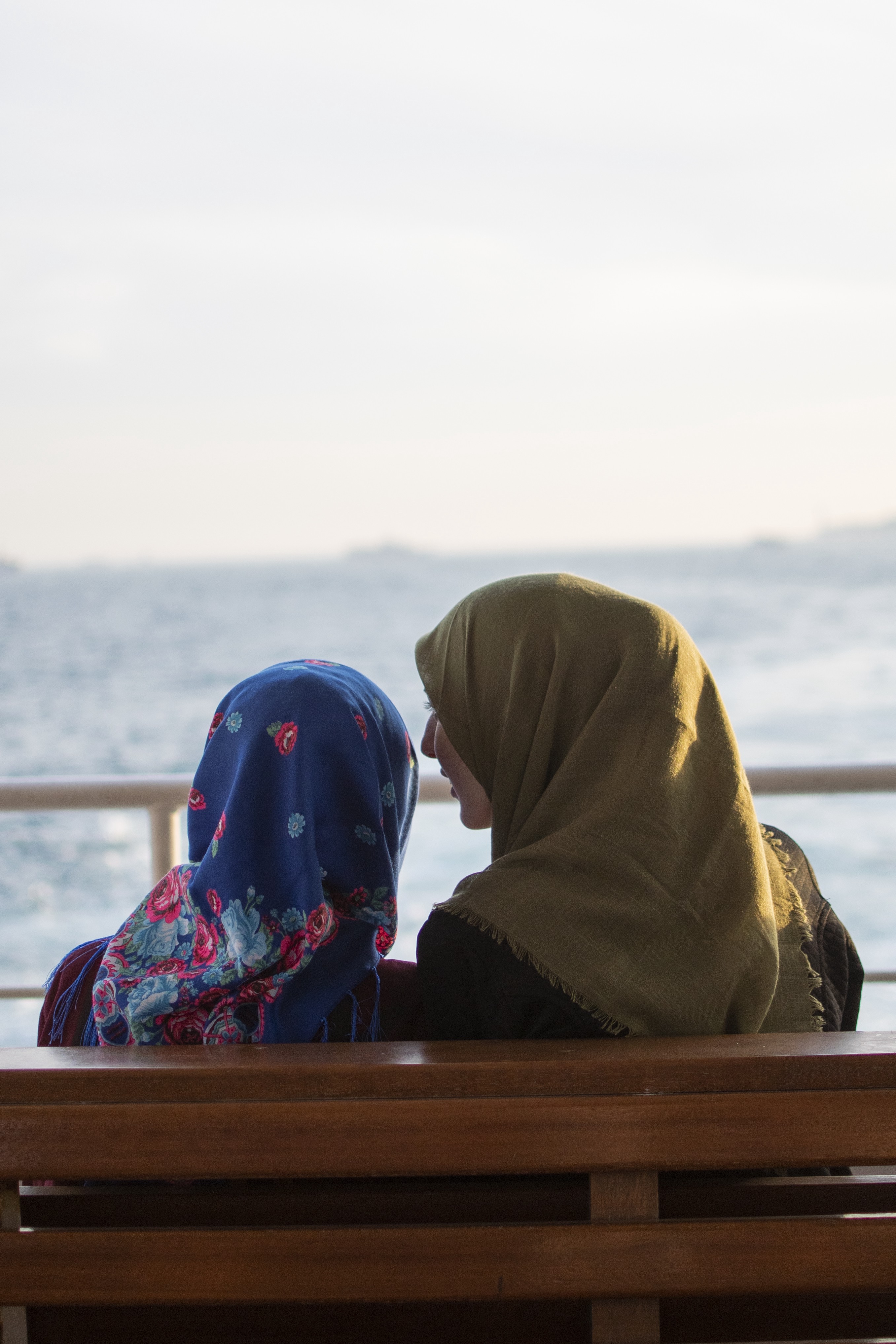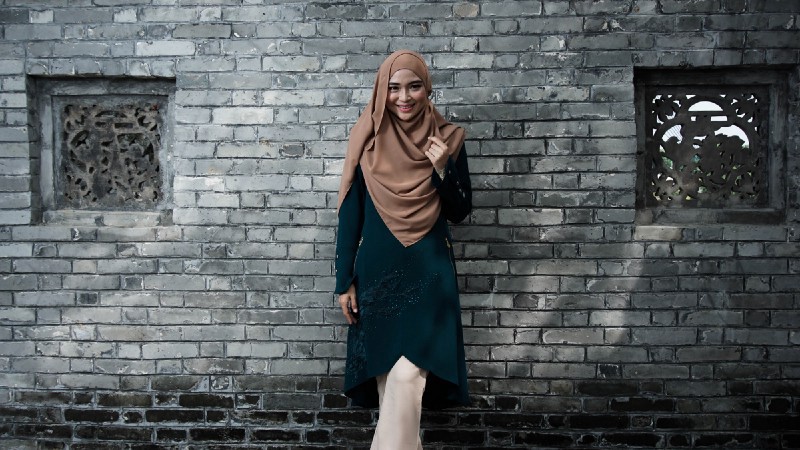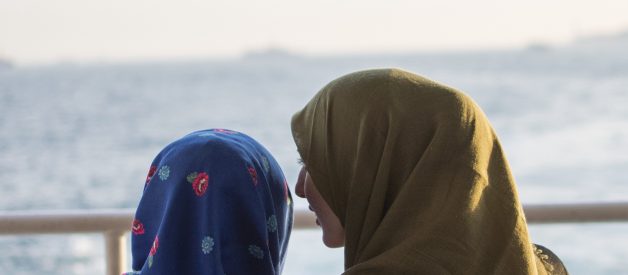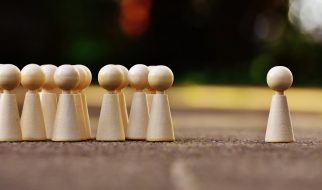(Hint: It is not to save us from sexually out-of-control men.)
 Photo by Mihai Surdu on Unsplash
Photo by Mihai Surdu on Unsplash
Years ago I gave up wearing hijab for about three months. I stopped covering my hair. I gave up wearing the scarf. At first, it was glorious. My hair was? so free. And fun. I tried different hairstyles I would not normally do because they would not work under a scarf. It felt pretty. I felt normal.
I had stopped wearing a headscarf because I didn?t know why I was wearing it. I felt like a fraud. When people asked me, I had canned lines from Muslim websites and memes I could regurgitate. But none of them rang true in my heart. It all felt hollow and forced. It was affecting my faith.
Let me be clear, I chose to put the scarf on in the first place. I wore it before I even met my husband. If it was up to him, I would not wear it in America. He feels it is unsafe. So why I wear it is entirely my decision. He has no right to dictate if I wear it or not. No husband has that right in Islam. Allah told women to wear it in the Qur?an. He did not tell husbands to have their wives put it on.
(Men have hijab as well. Check out another article I wrote to learn the rules for both genders.)
The Theory and (my) Practice of Hijab
Why some Muslim women wear what they wear
medium.com
Muslim women start wearing a scarf usually around the age of puberty (depending on the culture). It has nothing to do with marital status. Our decision to wear a scarf has no connection to the men in our life. It is entirely about being a woman. But what part of being a woman? What is it supposed to be for? I needed to find out for myself.
Why Most People Assume We Wear It
The main theory out there that people assume (including most Muslim men and even many Muslim women), is that it is to protect us and keep us from the sexual wantonness of the world. There are tons of sappy memes floating around the Internet that compare hijab-wearing women to objects such as lollipops, candy, pearls in oysters, and the moon. They propagate the idea that precious things are wrapped, covered, or hidden. That they are not on display for anyone to ogle. And that women should be that way as well. Wrapped, hidden, secured for their own safety.
I do believe that our bodies are precious and given to us by Allah. But women are human beings. We are not objects, even valuable ones. Dressing modestly is to show that we want to be valued separately from our sexuality.
There is nothing wrong with dressing to show off your sexiness. Muslim women just prefer to do this only for their husbands. Outside the privacy of the marital relationship, we prefer to be seen simply as humans who are female. Hijab is not a method of hiding women from the big, scary world of men no matter what internet memes and some people will say. Men should control themselves, as the quoted hadith in my article linked above proves.
Does Modesty Require Covered Hair?
My dilemma came from the fact that in Western culture (the culture I was raised in) you can be modest without covering your hair. A long skirt and a long sleeve blouse accomplish the same goal as an abaya and headscarf in Western culture. Both send the message that you choose not to share your body visually and that you choose to keep your sexuality private.
If, in my culture (specifically American), I can dress just as modestly without a scarf and send the same message, why do I need to go through the trouble of wearing one? What exactly does a headscarf do for me that modest Western dress cannot? Why do I need the extra trouble that it brings?
Does A Headscarf Really Prevent Harassment? Or Does It Cause It?
I have been told multiple times (normally by men) that hijab is my protection from being harassed. Are they kidding me? This is not true. There are always jerks who will bother a girl no matter what she is wearing. Sexual harassment is not about sexiness. It is about power. Even if a modest outfit helps at all, as I stated earlier, a modest outfit does not need to have a headscarf.
If anything, a headscarf only increases the likelihood of such abuse since a Muslim woman is often seen as being less powerful than a man. She is also an easy target since her clothes identify her as being a Muslim, when often Muslim men?s clothing doesn?t. This leaves hijab wearing Muslim women also open to harassment based on religious prejudice and bigotry which is more and more prevalent in Western society these days.
I am more harassed dressed as a Muslim than I ever was as a modestly dressed American. Everywhere I go I get stared at, gawked at, and even have rude comments made to me. Last week driving to the mosque for Friday prayers, two men in separate trucks rudely stared through their windows at me and made rude gestures when stopped at the stop lights. Walking home from work one day I had someone yell from their passing car to me, ?Go home!?
I have grown accustomed to it, though I still have an under layer of fear every time I go out in society. My husband gets upset and worried about me. Many women have it worse, even experiencing physical abuse. Some have been have been murdered. My wearing a headscarf puts me at a greater danger in Western countries. It does not protect me.
Muslim woman’s hijab grabbed by man who tried to pull off headscarf in London’s Oxford Street
Detectives are continuing to scour CCTV as they hunt the suspect, who is described as a white man, aged between 30 and?
www.telegraph.co.uk
San Diego man charged with racial attack on 3 women in hijabs, yells “go back to your country”
A San Diego man has been arrested in connection with racial attacks on three women wearing hijabs and allegedly yelling?
www.newsweek.com
Muslim women were attacked just hours after Trump’s win
The first police reports started trickling in within 10 hours of Donald Trump’s victory speech. A Muslim student at San?
www.nbcnews.com
Discrimination Against Muslim Women – Fact Sheet
Muslim women are a fast-growing segment of the United States population that reflects the breadth of this country’s?
www.aclu.org
The Real Reason We Wear It
I am not looking for protection. I am not hoping to hide in the shadows in safety. After a lot of study, reflection, and prayer I realized why I wear hijab. Why I go above and beyond the Western idea of modesty. Why I even risk my life wearing a piece of fabric on my head, and in some countries, would be breaking the law. There is only one reason to explain why Allah has asked us to do this.
To show that we are Muslim.
That is the most compelling reason. When I put on the scarf, I am telling the world that I believe in Allah and His prophet, Muhammad (pbuh).
O Prophet! Say to your wives and your daughters and the women of the faithful to draw their JALABIB close around them; that is better that they will be recognized and not annoyed. And God is ever Forgiving, Gentle. Quran 33:59
(Note: a jilbab (plural is jalabib) is an outer garment that covers a woman from head to toe, including her hair. These days we often use multiple garments to accomplish the same purpose. Such as socks, pants, top, and scarf instead of one big cape like garment like a chador. See pictures below to see examples of each. Hijab is a modern term that can be used interchangeably in most contexts and is in this article.)
 Multiple garments to make a jilbab. Photo by AHMAD AZWAN AZMAN on Unsplash
Multiple garments to make a jilbab. Photo by AHMAD AZWAN AZMAN on Unsplash One garment as a jilbab. Photo by ?? Janko Ferli? ? @specialdaddy on Unsplash
One garment as a jilbab. Photo by ?? Janko Ferli? ? @specialdaddy on Unsplash
In those three months that I gave up wearing hijab, I kept up my other obligations as a Muslim. I fasted Ramadan dressed as a modest Westerner. I told myself that my clothes didn?t matter as long as I was still modestly dressed. I told myself I didn?t need a headscarf to be a Muslim. I had fun doing my hair and feeling pretty in a way that I had given up when I had become a Muslim.
Then I went on a short vacation to our state capitol. My family and I walked downtown to a farmer?s market that is held right at the base of the capitol building itself. On the steps leading to the towering dome was a protest in support of Palestine. I was excited to see other Muslims! I live in a small town where we are one of only two Muslim families. Even when I go to the large nearby city to shop, I rarely run into other Muslims. So to see so many, I was elated!
They had just ended their protest and came walking right by us. I smiled and said ?Asalaam alikum? to a young sister wearing hijab, our normal greeting to each other which means ?Peace be with you.? It is an actual sin not to return the greeting. Yet I got no response. She just walked by me without a glance.
In her defense, I don?t think she could hear me. The crowd was extremely loud. And why should she ever expect a greeting from me? There was no reason to believe I was Muslim. I certainly wasn?t dressed like one. I am not from a ?traditional? Muslim ethnic group. I looked like any other white American walking down the street in Western style modest clothing. I learned a valuable lesson from that heartbreak (and it was heartbreak as I so rarely get to greet other Muslims.) I was invisible as a Muslim.
Telling the World, ?I am a Muslim?
Clothing is a language. We communicate who we are and what we believe and many other subtle details through what we choose to wear. As Muslims, our clothing tells the world in Whom and what we believe. We are standing up for our beliefs, our way of life, the Quran, and Allah. We are telling the world that a woman can be Muslim and dress like this and still be a doctor, a secretary, a mother, a teacher, a writer, a person who rejects violence and injustice in the world, a feminist, and anything else she wants to be. It says that we need not be thought of as oppressed. That we are every bit as capable, loved, encouraged, and valued as Western women are.
More importantly, it tells other Muslims who and where we are. So we can see each other. In much of the world, we are the majority. But not in Western countries. We need to know each other. We need to be able to identify each other. We need to create communities for support. We need to be able to greet each other as Allah in the Quran and the Prophet Muhammad (pbuh) have taught us.
And when you are greeted with a greeting, greet in return with what is better than it, or (at least) return it equally. Qur?an 4:86
Our religion is a beautiful one. It teaches us how to live the best possible life. One of the most important aspects of our faith is community. People are meant to live together and Islam is a religion that is meant to be shared. The first way to have a strong, vibrant community is to clearly be able to identify each other. I hear/read every day the tales of converts who are lonely and without community. Being able to recognize each other is the first step in creating a strong American Muslim community.
I believe that Allah provided women with hijab for precisely this reason. Community starts in the home, with the mother. I challenge every Muslimah to think of herself as a mother to the Ummah (a term referring to all Muslims). Wear your hijab proud and use it to increase the visibility of our Muslim community. Show people what a real Muslim woman is like, not the lies that others would have people believe about us. Show other Muslims that you exist. Remember that we are over two billion of the Earth?s population. Let us stand tall, wearing our scarves, recognizing each other and strengthening the Ummah, insh?Allah (God willing), for the glory of Allah.
***********************************************************
H F Sylaj lives in Wisconsin with her husband who is an Albanian-Kosovar Muslim and who always makes her laugh. She converted to Islam 16 years ago. For her undergraduate, she studied Theology and Visual Arts. Later she went back to school and earned degrees in Fine Jewelry Repair as well as Gemology. She is mom to a 10″ goldfish named Bubbles as well as step-mom/grandma to some awesome people. ? Check out modernhijablife.com to see what else she does.? Sign up here to be notified of her new articles.


